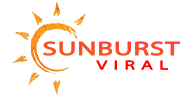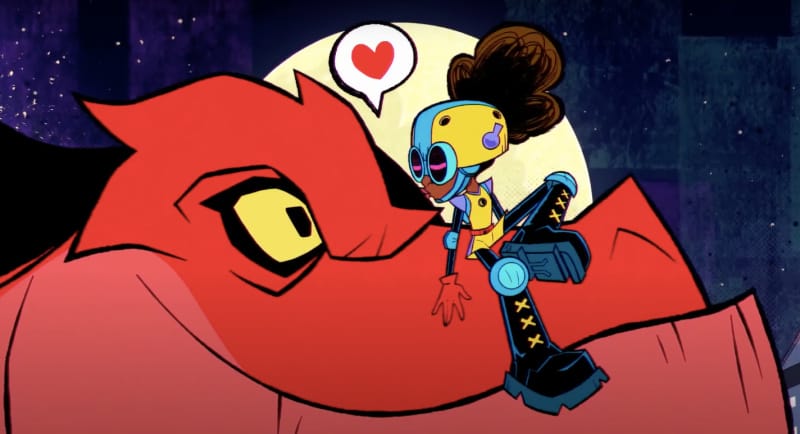Since their debut in 2017, Water From Your Eyes have been making waves. The prolific duo of Nate Amos and Rachel Brown have shaped not only a unique and revered sound for themselves, but have been at the very forefront of the NYC indie/alternative scene, bleeding out from the underground into group consciousness by way of a wry, experimental soundscape that toes a tangle of lines, from noise pop to art rock, dance-punk to shoegaze. Together and apart — Brown’s solo moniker is thanks for coming, and Amos’ This is Lorelei — the two artists have made it clear that their impact only continues to spread, particularly over the last two years when WFYE dropped their inspired Matador debut, Everyone’s Crushed, and the buzz around the band went from the city’s circles to a sound heard far beyond its limits.
This Friday, the band will release their latest, highly anticipated album, It’s a Beautiful Place. To be expected from Amos and Brown, the album is passionately innovative and sublimely weird. Though their experimental spirit has had them deemed “unpredictable,” these two offer a level of fluidity and thoughtfulness that could refute that particular choice of word, particularly on their latest and most recent LPs. In layman’s terms, it’s nothing but “chaotic good.”
Read more: 25 of the most exciting rising artists to watch in 2025
On IABP, with their trademark idiosyncratic perspective, and warped pop sensibility, the duo wander through an abstracted sci-fi landscape, shiny and lonesome, while ruminating on reality, existence, the cosmos — replacing the burnout mentality those topics typically funnel through with a tongue-in-cheek sense of humor. Lyrically and sonically, the album tests uncharted waters while shredding any notion of genre. Some listeners were quick to label the first single, “Life Signs,” as nü metal, while Amos’ guitar work has been compared to the minimalist, bright warbling style of Red Hot Chili Peppers’ John Frusciante on “Nights in Armor” — the latter being a band WFYE have mentioned as an inspiration.
That said, the thing about this album, and band, is they truly emulate their influences — though their music feels completely void of referentialism, a rare trait. For example, their quirky, twisted sounds with deep-cut narrative references — Brown credits a year of skimming the pages of The Dispossessed (a 1974 anarchist utopian novel by Ursula K. Le Guin) and There Is No Unhappy Revolution (a 2017 nonfiction by Marcello Tarì) as lyrical fuel, across the album — bring to mind a band WFYE have covered before: Ween. Tantalizing to watch, and playing literally and figuratively to the beat of their own drum, Ween drew from funk, psychedelia, country, metal, and even sea shanties throughout their discography. There may not be a direct sonic link to be found in It’s a Beautiful Place; the connection lies in the two bands’ attitude, and approach to art and sound — eclectic, “far-reaching,” and philosophical, with a satirical spin.
Describing the new album, Amos says, “It ended up being about time, dinosaurs and space… We wanted to present a wide range of styles in a way that acknowledges everything’s just a tiny blip.” Though the 10-song album clocks in at only 29 minutes, those who’ve listened to WFYE before know it is multilayered, at times cryptic in its nature. We spent the afternoon with the duo in Brooklyn, where over a game of pool, we tried to crack some of its codes. However, their answers only created further mystery. For the best. Listen, let it burn slowly, and allow the beautiful air of strangeness and uncertainty be a new experience that’s all yours to fumble through.
How would you describe your sound to someone who hadn’t heard it before?
RACHEL BROWN: It has sounds.
NATE AMOS: Kind of sounds like noise to me. I’ve listened to it too much.
BROWN: We understand if you don’t like it.
AMOS: But we hope you do.
BROWN: We really, really hope you do.
AMOS: Because we like it.
BROWN: It’s good. But it’s different. Each song is a different song.
AMOS: Not that it’s a descriptor that really amounts to anything, but it’s art rock.
BROWN: Yeah, art rock. So there’s a Wikipedia page for that. We’re not on it, but it’s there.
Adam Powell
Describe the album in a few words?
AMOS: Guitar.
BROWN: Blue… and cosmic.
AMOS: Guitar. Blue. Cosmic. Yeah. I feel like that’s the most accurate answer we’ve ever given for any question.
What would you say are the inspirations behind the album?
AMOS: Plant, space, dinosaurs. Francis Bacon.
BROWN: Anarchy, but looking at political structure. Not like the Joker’s style of anarchy.
AMOS: You should have just answered the Joker.
What feels different about this album?
BROWN: I guess they all feel different from each other. This one in particular feels different, because it’s the first album we’ve made since being signed to a label.
AMOS: So this kind of feels like our first album. Like another debut album in a string of debut albums. And it’s the first [one] we were sure was going to come out in some capacity, so we tried harder.
BROWN: We tried harder. I think it was just a different mindset. We still made the album for ourselves. But there was this undertone of, “Oh, people will listen to this,” which I guess, but it never really occurred to us.
AMOS: In stark contrast to the previous albums, which were made with the notion that people would not listen to them.
BROWN: Even when we released albums, it was more just to get vinyl, man, and there wasn’t any. I wouldn’t say anybody would be like, “Oh, you guys are successful.” We like to make an album. It was just a notion that other people have about us, I guess.
AMOS: Some different stress than we’ve normally had, making music. That just colors the process a little bit, you know? More or less people could potentially be hearing it.
BROWN: I still don’t give a fuck.
How has your background shown up in this album?
BROWN: Aren’t we all just a sum of our experiences? You can’t really ever escape who you are or who you’ve been, which I think is nice in a way because it means that whatever you’ve lost hasn’t fully been lost.
AMOS: I grew up in church every week, and when you hit a certain point, you’re not forced into doing that anymore. At least for me. I ran away from it, and I mostly just did a ton of psychedelics. I did a lot of thinking about the universe and whatever you think about when you’re on a bunch of psychedelics, and then you get over that, and you run away from that. Both of those things are definitely present on this album in spades.
Words of advice?
AMOS: Well, in terms of music, my main advice is just to not get hung up on things you’re making and keep making them because you get caught in that last 10% of making something, and then the amount of time it takes to finish that is equivalent to the amount of time it would take to make multiple other things. You get better things by doing it a lot. So my music-making advice is when something is 90% done, just stop because everything you’re going to change from that point on, that’s only stuff that you’re going to notice, and no one else is even going to pick up on that stuff. Because the things that people like about your music are the things that you just inherently do and don’t think about. So don’t edit things. Just let it be.
BROWN: If you want to do things creative, you have to just give in to the idea that it’s going to be perceived, and it might not be positive. But that’s not really the point of making things. But also when it comes to disagreeing with popular sentiments or what seems like popular sentiments, something seems wrong and fascist and probably fascist. If everyone’s afraid of fascism, that’ll win. And if we aren’t, then maybe we can stop it. Fuck the government. They don’t do anything for us, so don’t be afraid of them.


















